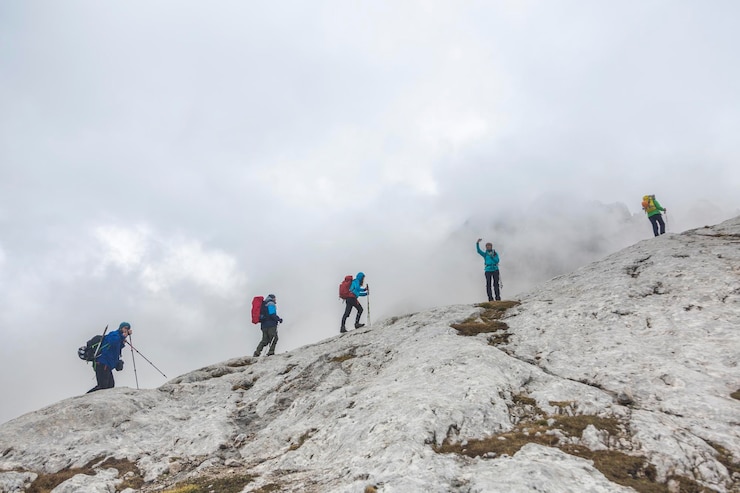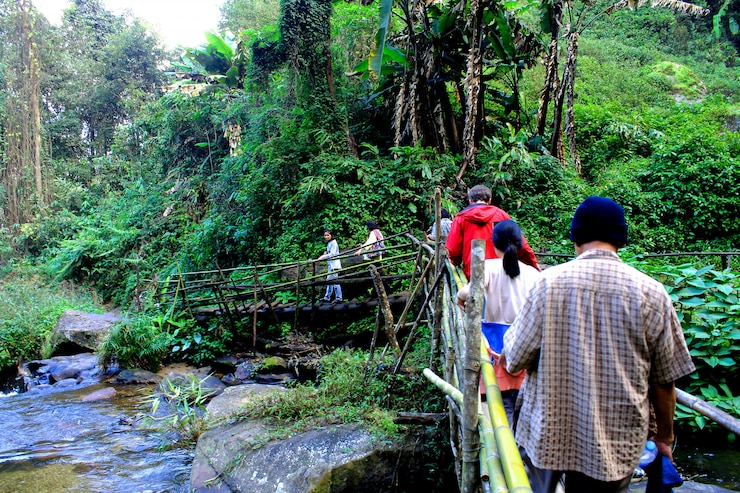

Trekking in Nepal is like a thrilling adventure, where you can see amazing mountains and learn about local culture. But, before you start, you need to know about permits, which are like special tickets. These permits help protect the environment and keep you safe. Let’s find out what permits you need for trekking in Nepal.
1. Trekking Information Management System card (TIMS)
When trekking in Nepal, on famous routes like Everest or Annapurna base camp, you may have heard of something called a TIMS card. TIMS stands for Trekking Information Management System, and it’s a card you’re supposed to get before your trek.
The TIMS card is managed by the Trekking Agencies Association of Nepal. Its main goal is to keep track of trekkers for safety reasons and to keep the trekking industry in check.
Let’s break down the costs:
- If you’re trekking solo and not from a SAARC country (like India), it’s about NPR 2,000 (around US$17), and you’ll get a green card.
- If you’re trekking solo and from a SAARC country, it’s about NPR 600 (around US$5), and you also get a green card.
- If you’re trekking in a group and not from a SAARC country, it’s about MRP 1,000 (around US$8), and you’ll get a blue card.
- If you’re in a trekking group and from a SAARC country, it’s about MRP 300 (less than US$3), and you also get a blue card.
Now, where can you get this TIMS card? The best spot, if you’re not using a tour operator, is the Tourist Service Centre in Kathmandu. It’s not far from Thamel, about a 15-minute walk on Pradarshani Marg. It’s a good idea to visit this place because you can not only get your TIMS card but also other necessary trekking permits.
Here’s what you’ll need to apply for a TIMS card:
- Your entry and exit dates for Nepal.
- The starting and ending points of your trek.
- A detailed trek itinerary.
- A local emergency contact number (which can be your tour operator).
- An emergency contact number from your home country.
- Your insurance policy number (you can’t trek without traveler’s insurance).
- A copy of your passport.
- Two passport-style photos.
2. Restricted area permits
When you plan to trek in certain unique places like the Lower Dolpo or Nar-Phu region, you won’t need a TIMS card. Instead, you’ll need something called a “restricted-area trekking permit.”
These special permits have different fees. Some areas charge per day, others per week, and some use a combination of both. Let’s take the Upper Mustang trek as an example. It requires $500 for the first 10 days, and after that, you’ll be charged $50 for each additional day you stay.
Here are the areas where you need a restricted-area permit: Humla, Kanchenjunga, Manaslu, Nar-Phu Valleys, Tsum Valley, Lower Dolpo, Upper Dolpo, and Upper Mustang.
3. National Park Permits

Every high-altitude trek in Nepal happens within a national park or a conservation area. For example, the famous Annapurna Circuit is in the Annapurna Conservation Area (ACA), while the Everest Base Camp trek takes place mainly in Sagarmatha National Park.
Now, here’s the great news: getting into Nepal’s national parks is super affordable! There’s a single entrance fee of just NPR 3,390 (that’s about $28). This fee is the same for all the national parks, and you only pay it once, no matter how long you stay.
So, where can you get this entry permit? There are a few options:
- At the park’s entrance gate: You can buy it when you arrive at the park.
- Online: Some national parks allow you to purchase the permit from their official website.
- Tourist Service Centre in Kathmandu: This is a great option if you’re planning your trek.
Here’s what you’ll need to get the entry permit:
- A detailed trek itinerary: This means you should have a plan for your trek, where you’re starting, where you’re ending, and the route you’ll take.
- Entry and exit dates for the park: Know when you’ll be entering and leaving the national park.
- The name and address of your tour operator (if you have one): If you’re using a tour company, provide their details.
- The name and contact details of your trek guide (if you have one): If you have a trekking guide, include their info.
4. Conservation area permits
Just like national parks, getting an entry permit for a conservation area in Nepal is easy. You pay a one-time fee, and you’re good to go. This fee is super affordable at just NRP 3,000 (about $25). Plus, they give you the permit right away.
Where can you get this entry permit? Here are a few places:
- Tourist Service Centre in Kathmandu: If you’re planning your trek ahead of time, this is a good spot to get the permit.
- Department of National Parks and Wildlife Conservation in Kathmandu: Another place in Kathmandu where you can get the permit.
- Annapurna Conservation Area Project (ACAP) office in Pokhara: If you’re in Pokhara, this office is where you can get the permit.
- Nepal Tourism Board office in Besisahar or Pokhara: If you’re near Besisahar or Pokhara, you can also get the permit here.
Here’s what you need to get the entry permit:
- A detailed trek itinerary: Have a plan for your trek, where you’re starting, where you’re ending, and the route you’ll take.
- Entry and exit dates for the conservation area: Know when you’ll be entering and leaving the conservation area.
- The name and address of your tour operator (if you have one): If you’re using a tour company, provide their details.
- The name and contact details of your trek guide (if you have one): If you have a trekking guide, include their info.
- Two passport-style photos: Don’t forget these!
5. Rural region trekking permits
In some places, there’s an additional fee for trekkers. An example of this is for those who are trekking to Everest Base Camp. For this area, you’ll need to get the Khumbu Rural Municipality Permit. Don’t worry, it’s not complicated, and it’s reasonably priced at NRP 2,000 (around $17).
To get this type of permit, you don’t need to plan. When you reach the entrance to the municipality, you can purchase it right there. So, no need to worry about this in advance. If you’re trekking with a tour operator, they’ll handle these fees for you, making it even easier for you.
Conclusion
Trekking in Nepal is an incredible experience, but you need the right permits to enjoy it fully. These permits help take care of nature and ensure everyone is safe. So, whether you’re going to Annapurna or Everest, make sure you have the right permits to make your journey awesome and respectful of the beautiful places you’ll visit.












